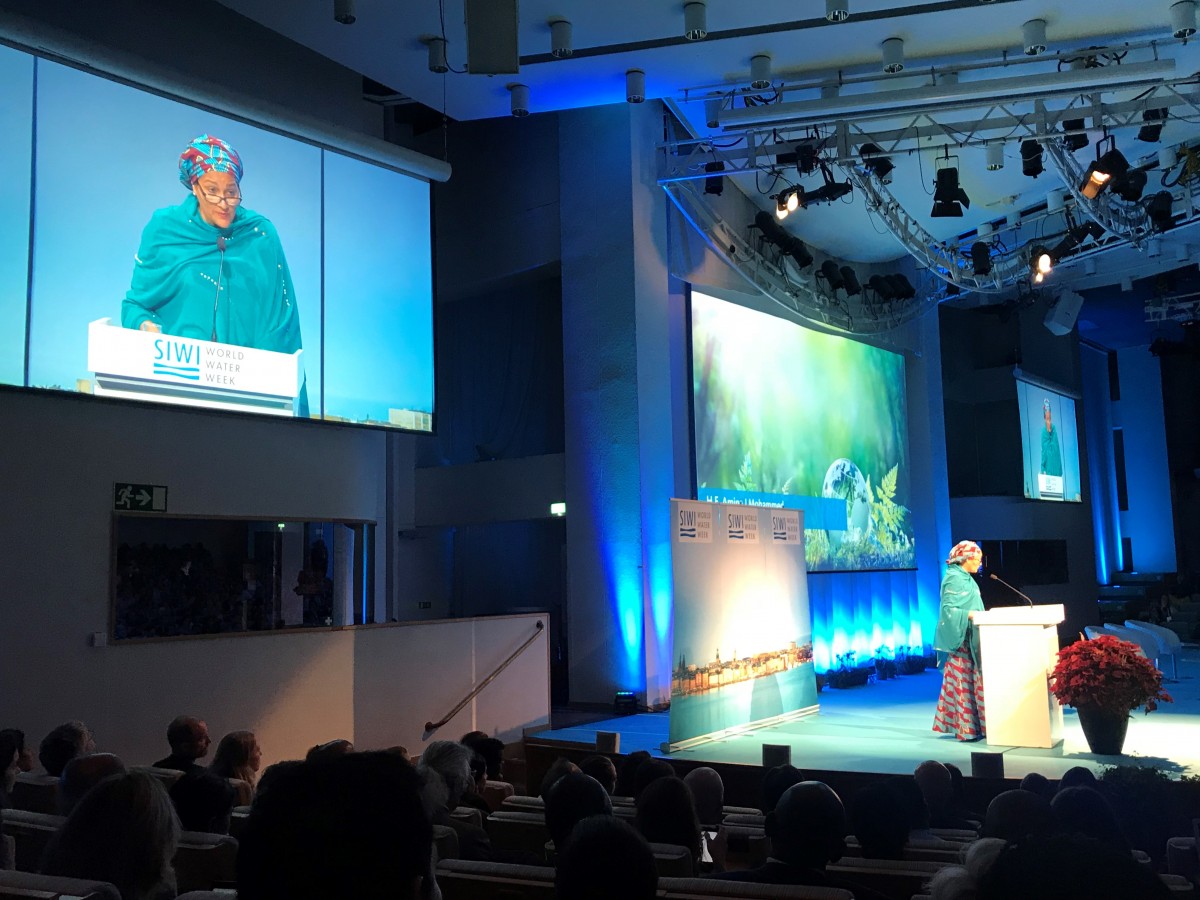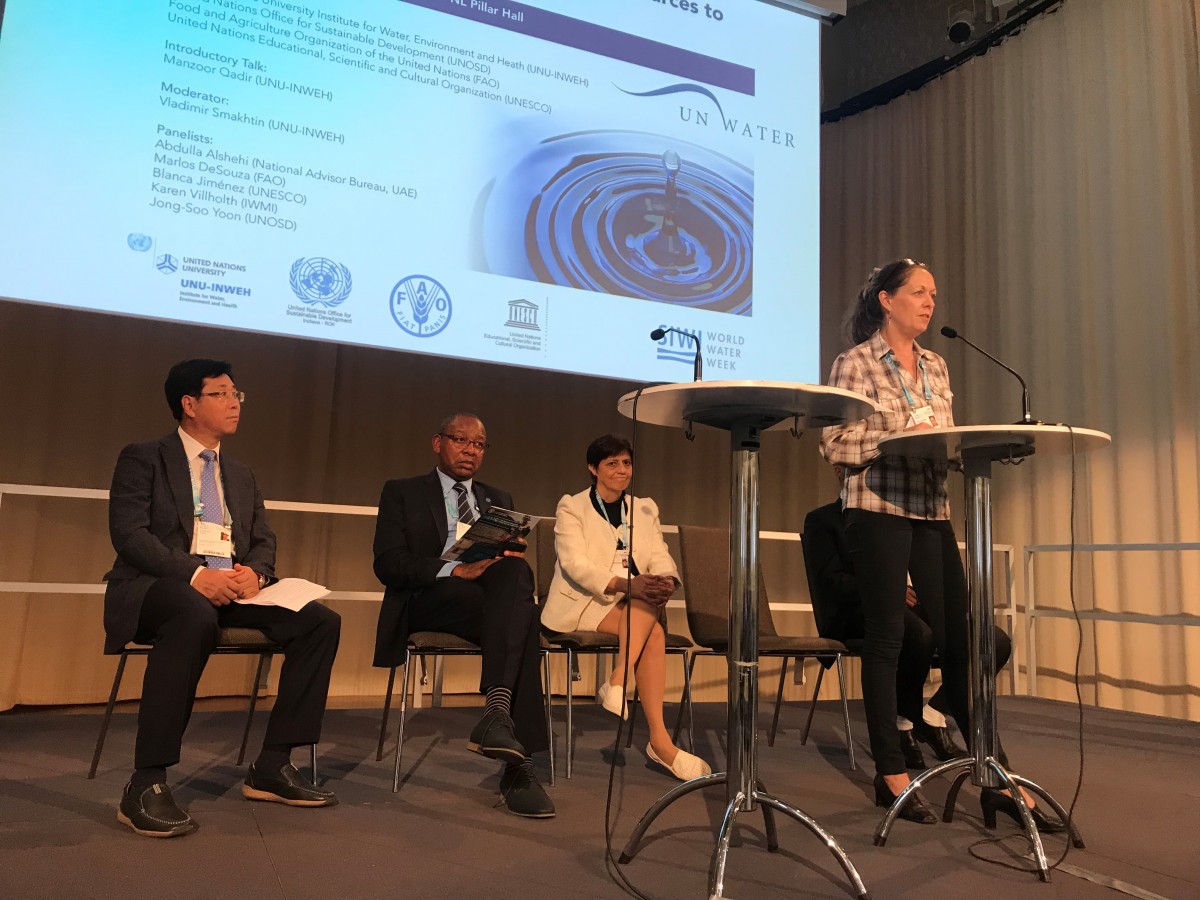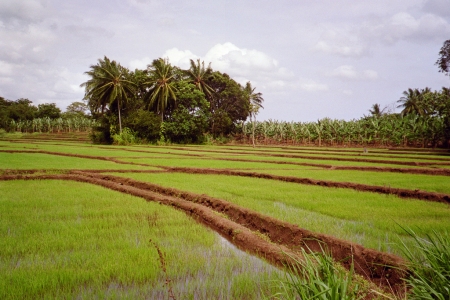“We must consider water management, ecosystems and human development and not prioritize one over another,” UN Deputy Secretary General, Amina Mohammed, urged in her keynote address at the recent Stockholm World Water Week’s opening ceremony.
Her statement seems intuitive—they are all vital to our future, and all intertwined. And they should therefore be prioritized in a manner that is mutually enhancing. Yet, attaining socioeconomic development while balancing the health of water and ecosystems is something that policy-makers, researchers and community leaders are constantly challenged to achieve.
This year’s World Water Week was themed “Water, Ecosystems and Human Development,” all vital components to our food security. And as Matthew McCartney of the CGIAR Research Program on Water, Land and Ecosystems says, “agriculture is too often a threat to the exact same water and ecosystems that we need to support our food production. We need to turn that around – and we can find many solutions within nature itself.” Ensuring we can feed a population slated to be nine billion by 2050 is a chief concern tied inextricably to water and environmental security.

The week highlighted progress on and potential solutions to this multi-faceted challenge – how to attain the goals of the SDGs and Paris Agreement on Climate Change. But more specifically, many conversations focused on the complexities of sustainably utilizing both built and natural infrastructure for human development. How do we enable economic growth while simultaneously protecting ecosystems and ensuring water security?
“Scarcity of water has become the new normal in so many parts of the world,” stated Torgny Homgren of SIWI Water at the opening ceremony, “How we govern our water resources will be most fundamental. We need both green and grey infrastructure.”
Here are four potential keys to progress, highlighted at World Water Week:
Recognize the tradeoffs in green and grey
Human-made (grey) infrastructure such as dams, levees and reservoirs have largely defined past water management. These aided important functions such as water storage and contributed significantly to economic development. Yet, there has been a recent shift towards reinvesting in nature – green infrastructure such as wetlands, forests and rivers – to enhance grey infrastructure. These nature-based solutions are seen to enhance sustainability, support critical ecosystem services such as water purification and flood mitigation, and reduce some risks and negative impacts of grey infrastructure.
Paralleling this shift is the discussion on the effectiveness and possible consequences (positive and negative) of moving development away from only grey investments to both grey and green.
For example, a discussion session and a recent brief by WLE and Fish Agri-food Systems (FISH), highlight how the green versus grey conversation is evolving. The tradeoffs associated with dams – including displacement of people and negative impacts on fisheries – have been long understood. But now there is much greater acknowledgement that ideally, the potential costs of development should not only be shouldered by the most marginal among us.
One vital form of green infrastructure is wetlands. Research by the International Water Management Institute (IWMI) found that urban wetlands, such as those outside of Kolkata, are key contributors to agricultural production and provide ecosystem services such as water treatment and flood mitigation.
“On a global and planetary level, these wetlands are essential,” said IWMI Director General Claudia Sadoff at the Stockholm Water Prize Symposium. “If we think about the SDGs, not just the SDG on water, but on food, on health, on cities, on climate, on terrestrial ecosystems, wetlands are central for achieving the livable cities that we aspire to as the world rapidly urbanizes.”
%20%20Photo%20by%20Prashanth/index.jpg?itok=Qbm8ZCar)
Remember the water and natural services under our feet
“We need to consider the whole natural system, including the subsurface, when we develop nature-based solutions,” says IWMI, GRIPP and WLE researcher Karen Villholth. “Underground aquifers can help us store freshwater, purify water, mitigate floods and sustain environmental flows. Solutions are out there, and we need to understand and take advantage of them.”
In a session focused on ‘Groundwater-based natural infrastructure (GBNI) solutions: The missing link to resilience?’, panelists discussed solutions ranging from managed aquifer recharge (MAR) schemes to Underground Taming of Floods for Irrigation (UTFI) techniques.
These cases reflect some of the GBNI Benefits. In IWMI’s UTFI project in India, researchers are demonstrating that retaining and harvesting monsoon rains both recharges the underground aquifers and decreases risks of flooding while providing water for dry season cropping.
Yet, in order to ensure that GBNI and other natural-based infrastructures are effective, sustainable and equitable, we need more informed and integrated water management. “Groundwater can be an important piece of the puzzle when it comes to devising integrated nature-based solutions,” says Karen.

Smallholder practices can improve ecosystem health
“Nature-based solutions can help address water challenges for agriculture, cities, disaster risks, and water quality,” stated the UN World Water Development Report. “But we need to consider smallholder perspectives,” reminds Olcay Ünver of the UN’s Food and Agriculture Organization (FAO).
For example, in the 'Small scale irrigation (SSI) — The Answer to Ecosystem Health’ session, panelists presented SSI, an increasingly popular alternative to the infrastructure of large scale irrigation. SSI enables farmers to modify their irrigation practice based on their own socioeconomic and biophysical contexts, oftentimes providing opportunity for increased food security.
Yet, the SSI approach has its own complexities, much of which have not been extensively studied. Although SSI can boost food security and increase resilience in the face of climate change induced extreme weather, the smaller scale irrigation models face issues in water management— water is not always equally distributed or delivered regularly. Recommendations from the session included better monitoring of water quality and irrigation scheduling in order to ensure preservation of ecosystem health and water equity.
Political drivers are key
Much of the week focused on ecosystems and water management from a water, energy and food “nexus” perspective. And how we deal with the tradeoffs has significant implications for our political, social and economic futures – from local to global levels. For example, Anders Jagerskog of the World Bank urged attendees of the ‘Political drivers for sustainable ecosystems: Understanding peace’ session to consider a multi-level approach to the SDGs.
“If we want to move this agenda forward,” he urged, “we need to work on two levels: we need to speak to the states, and we also need to reach out to other levels of society (youth/poor) to ensure their voices are heard. Working from the high to the low levels.”
Additionally, speakers emphasized the political-economic benefits of addressing challenges to water and to ecosystems and their services. These natural resources crisscross the world’s borders, and how we handle their management can amplify or ease international security and conflict issues.
Panelists at the ‘Rural Communities on the Move: Facing Water Scarcity and Migration’ session, worried that ecosystem challenges, especially related to water, remain unresolved and are contributing to social and political problems.
Migration is a water-related issue, argued IWMI’s Julie van der Bliek, “We need to understand why it’s happening and at the same time find out what we can do to counter it.”
Migration, poverty, conflict, inequality. The challenges we face show that we have a long way to go in our socio-economic development. Improved management of water and other natural resources will help define our intertwined ecological and social futures. And to help us better manage the trifecta of water, ecosystems and human development, we have to invest in the natural capital on which we all rely.
IWMI and WLE led or participated in over 30 sessions at the 2018 Stockholm World Water Week, along more than 3,600 participants from 133 countries.










